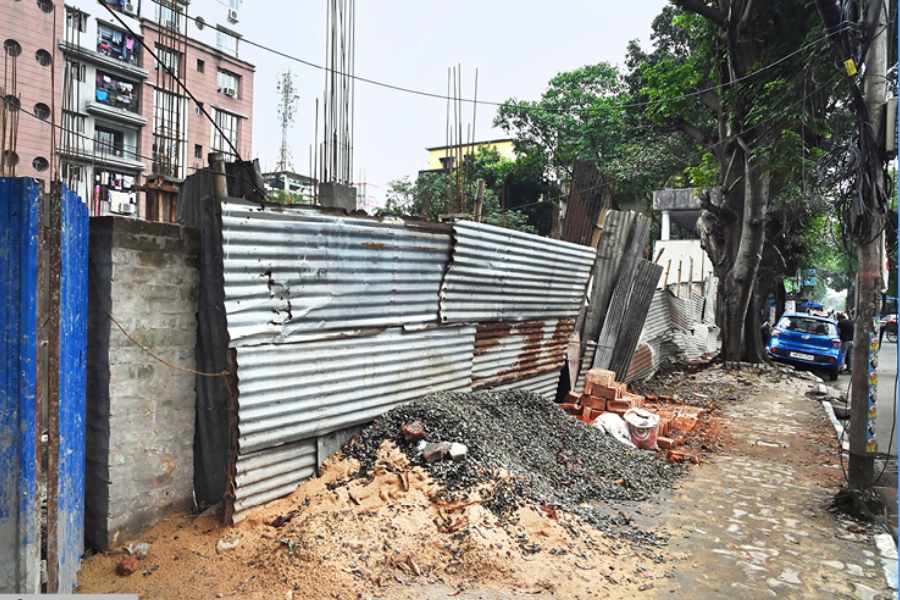Ten locations in Calcutta have been identified as air pollution hotspots, scientists at the state pollution control board (PCB) said, citing huge traffic and the presence of multiple construction sites along the stretches as the reasons for the high toxin load of the air.
The 10 locations are Maniktala Main Road, Canal South Road, JBS Haldane Avenue (Bypass-Park Circus connector), Christopher Road in
Tangra, Diamond Harbour Road, Anandapur near Ruby, Bara Khola, Mukundapur, BL Saha Road in Tollygunge, Manmohan Banerjee Road in Behala.
PCB officials said the hotspots have been identified based on data from air quality monitoring stations as well as sensor-based monitoring of air quality.
A scientist at the PCB said the National Clean Air Programme requires all non-attainment cities to identify their pollution hotspots.
Non-attainment cities are those that have failed to attain the National Ambient Air Quality Standards over a five-year-period. Bengal has six non-attainment cities — Calcutta, Howrah, Asansol-Raniganj, Durgapur, Haldia and Barrackpore.
“We have identified 10 hotspots in Calcutta. These are the places where air pollution levels are quite high,” said Kalyan Rudra, chairperson of the state PCB. “Measures are being taken to improve the air quality of those places.”
The PCB scientist said the steps that could bring down air pollution in high-
traffic zones include regular sprinkling of water (to prevent resuspension of dust), fixing potholes, efficient traffic signalling (so vehicles do not wait at a crossing for long) and ensuring that vehicles comply with auto-emission norms.
Dust emanating from construction sites is a major cause for the presence PM10 in the air. PM10 refers to pollutants that can cause a host of serious ailments.
Over time they can break down into PM2.5, which are even worse.
Deadly particulate matters are also formed in the air when gases emitted by vehicles mix with gaseous compounds present in the atmosphere.
Doctors and scientists repeatedly warn that air pollution can lead to a number of respiratory diseases as well as hypertension, stroke and heart attack.
The National Clean Air Programme has set a target to reduce the PM10 levels
by 40 per cent of the 2017 levels by 2026.
Abhijeet Chatterjee, an air quality management specialist, stressed the need to identify the sources of air pollution in the hotspots and take remedial measures.
“If construction sites are the main source, measures must be taken to minimise the dust that rises from there. Dust resuspension from roads, too, should be controlled,” he said.
Chatterjee, an associate professor at Bose Institute, pointed out that the air pollution level at a particular place also depends on how fast the pollutants get dispersed at that place.
Dispersion of pollutants is usually slow at places that have very little open space, where there are too many tall buildings with too little gap between them.
“A neighbourhood may have high emissions because of various reasons, but it can’t be called a pollution hotspot if the rate of dispersion is high. Similarly, a place with comparatively less emission can become a hotspot if dispersion is poor,” he said.
The Calcutta Municipal Corporation recently re-sent guidelines on curbing air pollution to associations of engineers, urging them to take effective remedial measures at construction sites.
The guidelines call for covering construction sites with geotextile fabric, sprinkling water on the soil at regular intervals, cleaning the wheels and undercarriage of trucks before they leave a site and limiting vehicle speed within construction sites to 24kmph so the movement of vehicles does not raise dust.
The guidelines also mention that construction materials like cement and sand should not be kept uncovered. The materials should not be kept on roads either.
The penalty for violation ranges from Rs 2,000 to Rs 50,000 a day. A site with a floor area between 200 and 500sq m will have to pay Rs 2,000 a day for not taking the measures. A project with a floor area of more than 25,000sq m will have to pay Rs 50,000 a day.
